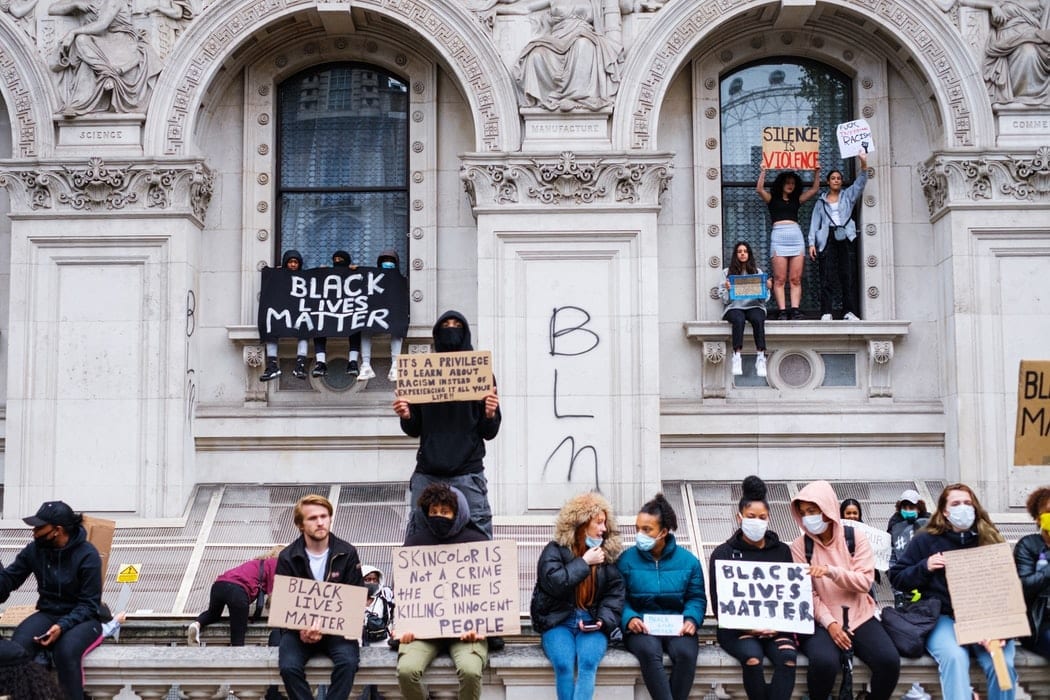The murder of George Floyd a 46-year-old black man in Minneapolis has been met with indignation right around the globe and awakened many to the racial injustice black people face in all areas of society. Users on Instagram, Twitter and Tiktok have shown how the mechanics of change are in-fact changing themselves. This digital activism will now set the precedent for social movements in the future.
New methods of activism, through the use of social media, have been crucial in bringing people out onto the streets in towns and cities right round the globe. The number of people joining protests, particularly during a global pandemic, has been inspiring to see. Many of the protests in the UK were set up and organised completely through the use of social media and succeeded in bringing out thousands and thousands to protest peacefully over the weekend.
Although we have seen the use of digital activism become more popular over the last twenty years; this is the first time it has been seen on such a large scale and with such effectiveness both in the UK and around the world. It is evident that the BlackLivesMatter movement have been particularly successful in mobilising thousands of people onto the streets having a large impact on the offline world as well as the online one.
The Activism Of Viral Videos
It was of course the video of George Floyd being murdered by the police in Minneapolis which ignited the campaign for justice for the 46-year-old and his family. Throughout the recent BLM protests around the world, the use of video on social media in particular has been an effective way for campaigners to call out actions of police brutality.
The growing popularity of the social media platform TikTok have given consumers of content a first-person view of protests showing banners and chanting. Many individuals have taken to TikTok in recent weeks sharing their experiences as a black person in the UK. The ability on the app for one voice to reach thousands even without a large follower base has increased the momentum of the campaign.
Video has also been an important source in calling out further acts of police brutality during protests. Police cars in New York driving into protesters and a 75-year-old man being pushed to the ground by a group of armed officers: these are just two of the videos that went viral right around the globe. Both contributing not only to the Black Lives Matter movement but also the fight against police brutality.
Furthermore, the most notable video to be shared in the UK being the images of the statue of Edward Colston, a well-known slaver, being thrown into Bristol harbour. In many ways the video itself had more impact than the action of pulling the statue down. The video quickly circulated around the world appearing in multiple international publications such as The Washington Post, CNBC, and la Repubblica just to name a few.
This started a debate over whether a statue of a slaver should be there in the first place. Critics of the move like Home secretary Priti Patel called the act “utterly disgraceful and a distraction from the cause”. However, the reality was, it awakened many to the deep-rooted issues the UK black community face and will be seen as a turning point in the BlackLivesMatter movement in the future leading to the review of many historical figures nationally and internationally
Taking The Lead
We have seen many examples of online activism emerge in the past 20 years, but it is the underlying idea of being your own leader throughout this campaign has been something that has shone through. Particularly the idea of educating yourself alongside teaching others has been a key theme throughout. The emergence of new Black leaders on this topic – whether with a big or small following – reflects the recent emergence of climate activists around the world.
Mer Joyce is the founder of Do Big Good, an impact measurement firm who help groups and the public increase the efficiency of their social change. She told me “I think we are seeing a new flowering of digital activism in these protests. Despite the attempts to limit the revolutionary power of social media through disinformation, people are using new tools like live streaming and TikTok and old tools like crowdfunding and Twitter to mobilize in a way that is not leaderless, but leader-full.”
It is this “leader-full” action that has been evident particularly in the past two weeks, sharing posters, banners and information on how to educate on the topic have particular traction on social media. Bringing together the words of social media posts and protest banners from around the world has been particularly popular in spreading awareness of the cause. The personal nature of the subject matter has been the motivating factor bringing many out onto the streets to protest.
Despite the successes, the BLM activism on social media has not been without its problems and criticisms. The “black square trend” on Instagram faced criticism from some who viewed the trend as trivialising the issue. Problems that black people faced on a day to day basis seemed to have been turned into an internet trend. Moreover, the “black square trend” blocked out a lot useful information on the BlackLivesMatter hashtag and pushed posts from previous days further down the page meaning the hashtag was effectively silenced for a day. Many however, backed their black square post up by signing petitions, donating to GoFundMe pages and educating family members.
Despite minor problems with online activism; it has been particularly successful during the George Floyd Protests and the wider BlackLivesMatter movement and hopefully has paved the way for other successful social movements in the future. The campaign has awakened thousands of voices right around the globe. Now it is time for our leaders to listen to those voices and make constructive change.
Words by Jordan Edwards
